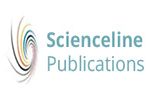(2022) Basic Principles and Applications of Live Cell Microscopy Techniques: A Review. World's Veterinary Journal. pp. 339-346. ISSN 2322-4568
|
Text
article/74/WVJ 12(3), 339-346, September 25, 2022.pdf - Published Version Download (492kB) |
Abstract
Live cell imaging has provided great benefits in studying multiple processes and molecular interactions within and/or between cells. This review aimed to describe the common live cell microscopy techniques and briefly explain their principles and applications. A wide range of microscopic techniques, from conventional transmitted light to an array of fluorescence microscopy techniques, including advanced super-resolution techniques, can be applied for live-cell imaging. Transmitted light microscopy uses focused transmitted light that goes through a condenser to achieve a very high illumination on the specimen. On the other hand, fluorescence microscopy uses reflected light to capture images of cells or molecules that have been fluorescently dyed. Techniques for transmitted light microscopy are simple to use but have poor resolution. Although the resolution of fluorescent microscopy techniques is only approximately 200-300 nm, this is nevertheless an improvement over conventional transmitted methods. Conventional light microscopy�s resolution was improved by the introduction of the super-resolution microscopy technology family. These methods �break� the diffraction limit, enabling fluorescence imaging with resolutions up to ten times higher than those possible with traditional methods. Each live cell imaging method has advantages and drawbacks. The primary deciding criteria for choosing the type of microscope are the study�s objectives, previous experience, the researcher�s interests, and financial viability. Hence, a thorough understanding of the technique and application of the various live-cell microscopy methods is paramount in life science studies. © 2022,World''s Veterinary Journal.All Rights Reserved.
| Item Type: | Article |
|---|---|
| Keywords: | fluorescent dye, Article; biomedicine; confocal laser scanning microscopy; darkfield microscopy; differential interference contrast microscopy; economic aspect; financial viability; fluorescence; fluorescence microscopy; human; illumination; image quality; imaging; intermethod comparison; job experience; laser microscopy; live cell imaging; live cell microscopy; microscopy; multiphoton confocal laser scanning microscopy; nonhuman; phase contrast microscopy; research; spinning disk confocal microscopy; stimulated emission depletion microscopy; super resolution microscopy; transmitted light microscopy; wide field fluorescence microscopy |
| Subjects: | S Agriculture > SF Animal culture |
| Divisions: | World's Veterinary Journal (WVJ) |
| Page Range: | pp. 339-346 |
| Journal or Publication Title: | World's Veterinary Journal |
| Journal Index: | Scopus |
| Volume: | 12 |
| Number: | 3 |
| Publisher: | Scienceline Publication, Ltd |
| Identification Number: | https://doi.org/10.54203/SCIL.2022.WVJ43 |
| ISSN: | 2322-4568 |
| Depositing User: | Dr. Alireza Sadeghi |
| URI: | http://eprints.science-line.com/id/eprint/786 |
Actions (login required)
 |
View Item |


 Dimensions
Dimensions Dimensions
Dimensions